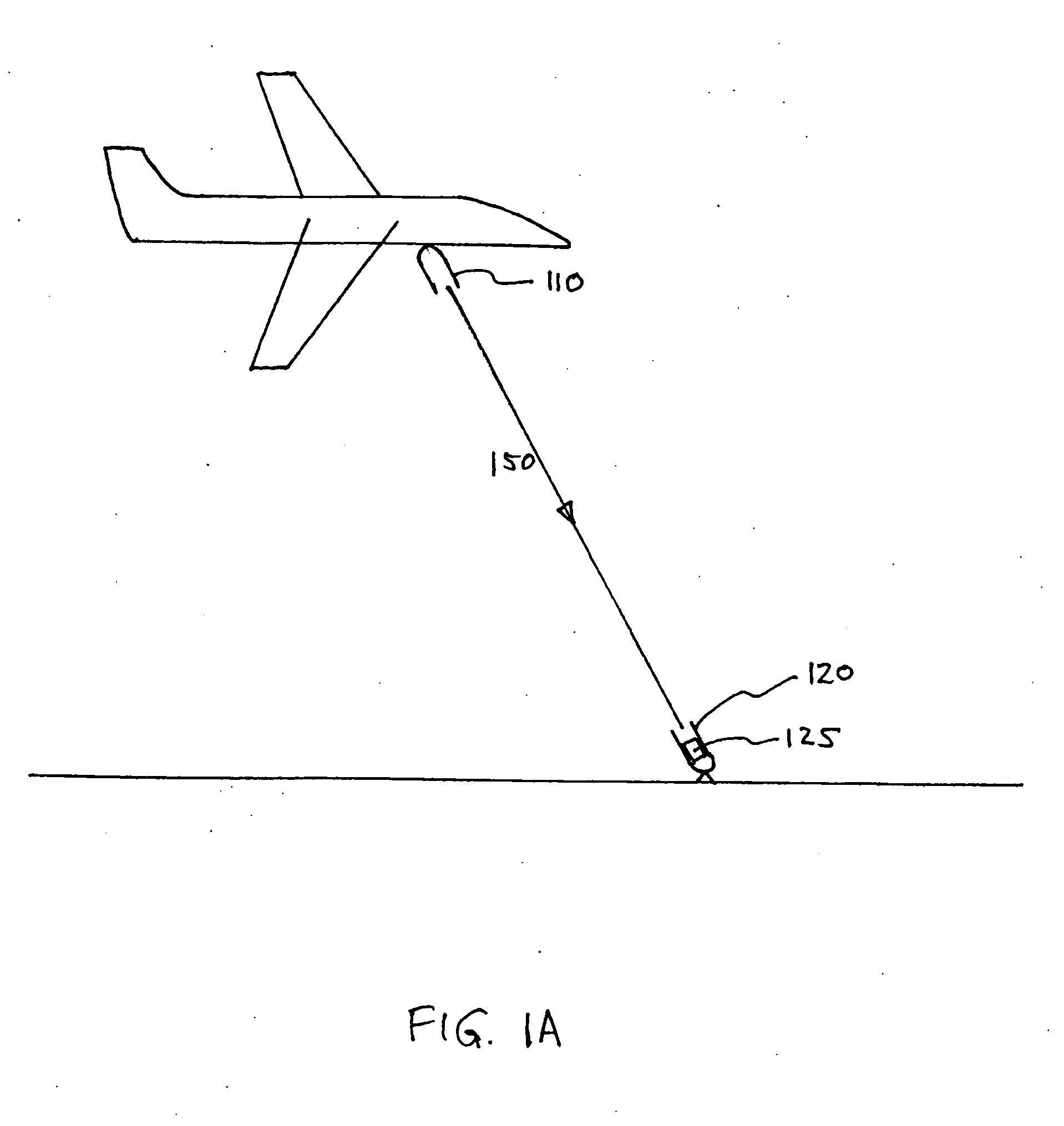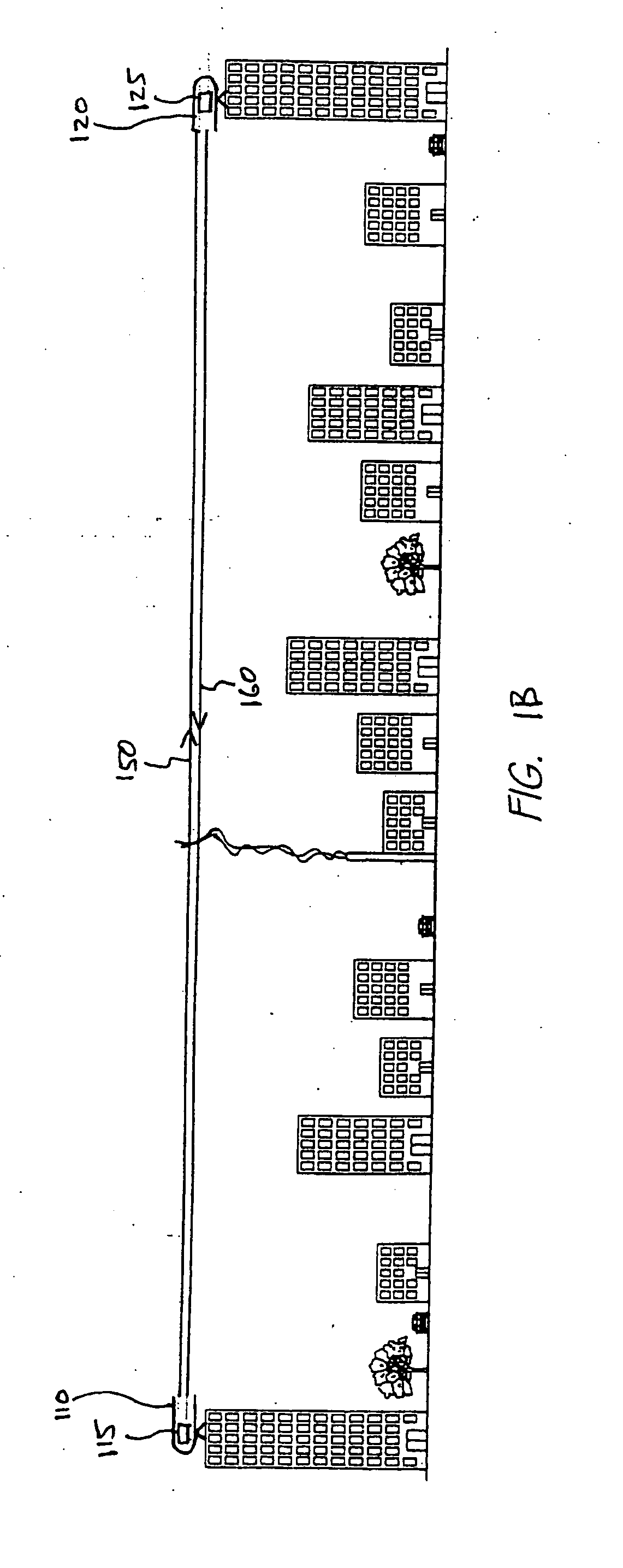Data port alignment of free space optical communications terminal with adaptive optics
a data port and optical communication terminal technology, applied in electromagnetic transmission, electrical equipment, transmission, etc., can solve the problems of constant changing aberrations of free-space optical communications systems, affecting the accuracy, reliability and efficiency of free-space optical communications systems, and suffering from optical aberrations of free-space optical communications links
- Summary
- Abstract
- Description
- Claims
- Application Information
AI Technical Summary
Benefits of technology
Problems solved by technology
Method used
Image
Examples
Embodiment Construction
[0018]FIGS. 1A-1C are illustrations of example free-space optical (FSO) communications system using adaptive optics. The FSO communications system in FIG. 1A is designed to communicate data over a FSO data link 150 from an airborne transmitter 110 to a land-based receiver 120 which may be either stationary or mobile. For convenience, the term “transceiver” will be used to refer to modules that only transmit 110 and to modules that only receive 120, as well as to modules that both transmit and receive.
[0019] Each transceiver 110, 120 includes a telescope that is pointed at the telescope of the other transceiver. The transmitting telescope 110 typically includes components for tracking and directing an optical beam 150 to the receiving telescope 120. The receiving telescope 120 typically includes components for following and receiving the optical beam 150 from the transmitting telescope 110. Examples of components that can be used for these purposes include steering mirrors, mechanic...
PUM
 Login to View More
Login to View More Abstract
Description
Claims
Application Information
 Login to View More
Login to View More - R&D
- Intellectual Property
- Life Sciences
- Materials
- Tech Scout
- Unparalleled Data Quality
- Higher Quality Content
- 60% Fewer Hallucinations
Browse by: Latest US Patents, China's latest patents, Technical Efficacy Thesaurus, Application Domain, Technology Topic, Popular Technical Reports.
© 2025 PatSnap. All rights reserved.Legal|Privacy policy|Modern Slavery Act Transparency Statement|Sitemap|About US| Contact US: help@patsnap.com



